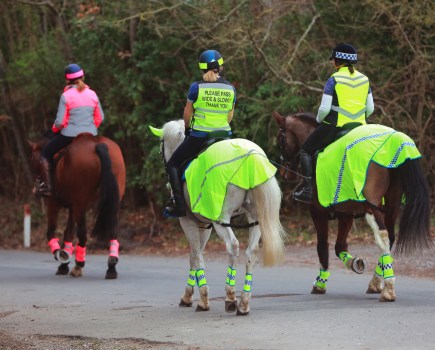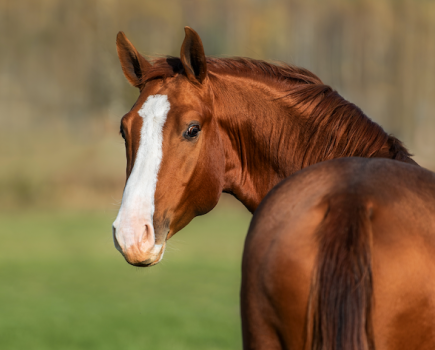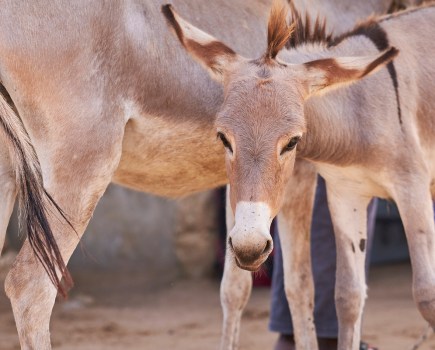By torchlight I can see a very distressed horse lying on its back, trapped in a deep trench between a breeze-block stable wall and the sheer side of a bank that has been excavated in order to build the stable.
The poor frightened thing struggles in vain to move, but is completely trapped.
The message I received on my pager had read: “horse fallen down 20ft bank, on back, Fire Brigade called”.
Driving across a very dark and quiet Dartmoor, I wonder what I am going to find.
The blue flashing beacons of the Fire Brigade, visible a long way away across the moor, are strangely comforting as past experience has made me a great admirer of this heroic and resourceful service
How are we to extract this horse without injury?
I discount the initial suggestion to demolish the stable, as it would be a huge and lengthy task, and a horse struggling to stand on a doubtless jagged concrete base would risk severe injury.
But we have one huge piece of luck.
Because the horse is on its back with limbs upwards, by attaching ropes to its legs it should be possible to lift it upwards and out of the trench.
After all, this is how we lift anaesthetised horses in our operating theatre.
Suspended from a crane
We have to be quick — but where do you find a crane in the middle of the moor on a dark Sunday night?
Then we have our second piece of luck: the welcome appearance of the next-door farmer driving a huge tele-handler (in effect a crane).
It is certain that the horse would struggle violently if it is lifted in a conscious state, even if heavily sedated.
A short acting general anaesthetic is going to be necessary, but that will bring other worrying problems.
The horse is now a poor anaesthetic risk, and if it survives the anaesthesia there is the possibility of a stormy and violent recovery, risking further injury.
A large flat field is necessary to allow the horse to wake up from the anaesthetic in a safe and controlled way.
Unfortunately, the nearest level field is 500 yards away.
It means the horse will have to be carried there, asleep but suspended from the crane.
This is not ideal but we have no other choice.
It’s time to get to work.
An agonising wait
Crawling into the trench, I am passed a syringe containing a heavy dose of sedative.
This has to be injected into a small vein just behind the jawbone as I risk being struck by the fore legs every time the horse struggles if I use the jugular.
After an agonising wait for the sedative to work (I force myself to wait four minutes on my watch) it is time for the anaesthetic injection.
Soon the horse is quiet.
I attach the straps to the fore limbs and, standing on the horse’s belly (the fire-fighters are instructed to pull me out of the trench if any limb even slightly moves), I secure the hind limbs.
Then we lift, straight up, all the while protecting and supporting the horse’s head with a rug.
With the horse suspended by its legs we then move it along the road to the field.
I calculate I have 15 minutes of good anaesthesia to get the horse to its recovery site — but it takes considerably more than 15 minutes, perhaps the longest journey of my life.
The horse starts to wake
Halfway there the horse starts to wake up and struggle, flailing its head and alarming the six burly firemen who are supporting it.
A second and then a third anaesthetic injection are needed by the time we get to the field.
The straps are detached and we wait.
The horse breathes quietly and seems, for now, to be at peace.
Eventually, after a long wait in the cold and dark, there are some limb movements and it is time for a further, short-acting, sedative injection.
This is given in order to keep the horse down for a bit longer so that it can clear the anaesthetic from its brain more completely.
When it stands it will then be much more co-ordinated and less likely — as a flight animal — to struggle and panic.
A torchlight inspection
Although we have successfully rescued the horse I cannot relax until it is up and standing quietly.
To everyone’s huge relief, after a soft whinny it suddenly stands up — dazed, stiff but stable… and safe.
A torchlight inspection confirms that there are no significant injuries.
It is over.
Driving home across the moor that night, now well after midnight, I reflect that although my job often brings disrupted family life, fatigue, frustration and interrupted sleep, there are also, occasionally, moments of quiet satisfaction.
Main image © Shutterstock. NB This is a stock image and the referenced horse rescue is not shown.







